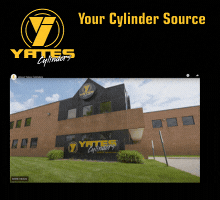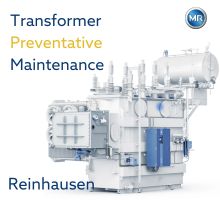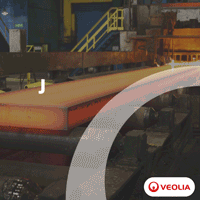Commercial Metals Reports 1st Quarter Results
12/18/2008 - ABSTRACT: Commercial Metals reports net earnings of $62.0 million on net sales of $2.4 billion for the quarter ended November 30, 2008.
Commercial Metals Co. reported net earnings of $62.0 million on net sales of $2.4 billion for the quarter ended November 30, 2008.
The $62.0 million net earnings ($0.54 per diluted share) compares with net earnings of $69.2 million ($0.57 per diluted share) for the year-ago first quarter. Net sales of $2.4 billion compares with net sales of $2.1 billion last year. Results included pre-tax LIFO income of $114 million (a quarterly record) or after tax $0.65 per diluted share. This compares with pre-tax LIFO income of $4.3 million or after tax $0.02 per diluted share in last year's first quarter.
At quarter end, the LIFO reserve totaled $449 million. Changes in LIFO are not write-ups or market adjustments; they are changes in cost components based on an assumption of inventory flows.
Management had projected an earnings range of $0.35 to $0.45 per diluted share assuming $50 million pre-tax LIFO income (after tax $0.28 per diluted share) for the quarter. Actual earnings per diluted share were $0.54 with a LIFO income of $0.65 per diluted share. Operationally, without considering the LIFO effect, the company underperformed its projection by a range of $0.18 to $0.28 per diluted share. The LIFO income arose from steep declines in the cost of ferrous scrap during the quarter and a concerted effort to lower inventories.
Selling, general and administrative expenses in the first quarter included $12.7 million of costs associated with the investment in the global deployment of SAP software compared to $10.3 million in last year's first quarter; project to date we have expensed $101.4 million. Other SAP costs of $93.7 million have been capitalized since inception of the project, of which $12.2 million was capitalized in the current quarter.
Management Comments—“The global liquidity crisis has frozen metal markets causing a downward spiral of confidence,” said Murray R. McClean, Chairman, President and CEO. “The quarter witnessed the complete collapse of ferrous scrap pricing with a benchmark shredded scrap price falling $421 a ton during the period, including uncharacteristic mid-month reductions during October/November. Management had anticipated the downward direction of ferrous scrap pricing, but not the accelerated fall. Decreasing prices coupled with concerted efforts to lower inventory quantities resulted in the reversal of previous LIFO charges, but to a greater degree than estimated.
McClean noted that LIFO mitigated some, but not all, of the losses on inventory as prices fell. “Our Americas Recycling segment incurred significant losses as it lowered its inventories. The Americas Mills segment recorded all-time record quarterly earnings on the strength of LIFO income,” said McClean. “The lower pricing environment was a benefit to the Americas Fabrication and Distribution segment as lower-cost material enabled margin expansion.” He added that falling prices, as well as continual investment in Croatia, led to losses in the International Mills operations, while the company’s International Fabrication and Distribution continued to be profitable, “but at lower levels."
Speaking specifically about the company’s Americas Mills segment, McClean said, "On the strength of $75.3 million of pre-tax LIFO income (vs. $3.9 million income in the first quarter of last year) generated predominantly by the severe drop in metal prices, our Americas Mills segment's adjusted operating profit of $118.7 million was an all-time quarterly record. The LIFO reversal lessened the impact of the freefall of ferrous scrap pricing as higher-priced material made its way through production costs to finished goods.
"It was a quarter of declining trends,” continued McClean. “Our steel mills ran at 69% of capacity for the quarter, a rate achieved by a strong September offset by weakening demand the rest of the quarter. Sales revenues were comparable to last year's first quarter, a product of a higher average selling price against declining volume. Our steel mills' adjusted operating profit of $101.3 million was up 54% compared to the prior-year first quarter on the strength of $66.5 million pre-tax LIFO income compared to $2.9 million pre-tax LIFO income in the prior year.”
McClean said that metal margin provided a bright spot for the quarter: at $460 per ton it was 36% above the prior year's first quarter as the backlog from the summer's record pricing was shipped. However, he also noted that the price of ferrous scrap consumed during the quarter rose 37% compared to last year's first quarter.
“More telling of current trends, the average cost of scrap purchased during the quarter fell 36% versus the average of the fourth quarter of last year,” said McClean. “Our average selling price was up $211 per ton to $796 per ton while the average selling price for finished goods was up $207 per ton to $822 per ton.
“Sales volumes declined 27% to 432 thousand tons,” added McClean. “Rebar shipments were down 17% and merchant tonnage declined 36% as service centers continue to destock. The price premium of merchant bar over reinforcing bar averaged $187 per ton.”
On a quarter-to-quarter basis, McClean said that tonnage melted for the first quarter was down 30% to 398,000 tons while tonnage rolled declined 25% to 366,000 tons as the company adjusted production to meet falling demand. The adjustments led to lower production rates, which resulted in overall decreases in electrode, alloys, and energy costs but higher cost per ton.
Regarding the company’s International Mills segment, McClean said, "Rapidly declining prices in Poland, continued high production costs in Croatia and a strengthening U.S. dollar resulted in an adjusted operating loss of $16.7 million for this segment compared to a small loss in the first quarter last year.
“CMC Poland suffered an adjusted operating loss of $8.1 million as pricing fell throughout the quarter requiring market valuation adjustments for inventory held at quarter end,” said McClean. “The mill acted aggressively to lower its inventories; shipments totaled 295,000 tons (35,000 tons of billets) compared to 268,000 tons (33,000 tons of billets) last year. Sales were aided by customer avoidance of imports in declining markets with their longer lead times and anticipation of possible price increases in January.
McClean said that for the first quarter, the International Mills segment melted 290,000 tons, equal to last year, and rolled 237,000 tons, again comparable to last year. He said average selling prices increased 15% to PLN 1,714 per ton (including 12% billets) from PLN 1,489 per ton (including 12% billets) in last year's first quarter. He added that the average selling price dropped some 18% in the first quarter compared to the fourth quarter.
The cost of scrap entering production increased 9%, and the average metal margin increased PLN 144 to PLN 767 compared to the previous year's first quarter. The Polish zloty fell 28% against the U.S. dollar during the quarter.
"The turnaround at CMCS (Croatia) is contingent upon the successful completion of our capital-expenditure programs for a replacement furnace and improvements to the continuous caster. We are scaling back the other production lines for welded and drawn tube to match reduced demand. We rolled and sold 18,000 tons for the quarter. Our adjusted operating loss was $8.6 million."
Financial Condition—"Our financial position remains strong and will get stronger,” said McClean. “The anticipated conversion of working capital into cash has begun, though not as rapidly as initially anticipated. In the first quarter inventory reductions were slowed by the dramatic decline in order flow; working capital was also affected by the usual payment of year end obligations in this quarter. We had a current ratio of 2.1, contractual capacity of $373 million under our revolver, and $120 million unused capacity under our accounts receivable securitization program at November 30, 2008.
“Our coverage ratios remain strong, both on domestic borrowings as well as the separate borrowings of CMCZ,” added McClean. “We have a $100-million debt repayment obligation due in February 2009 and, subsequent to that, no significant principal repayments due for the next three years."
Outlook—"We remain sober about near-term prospects,” stated McClean. “Global liquidity remains a real concern, confidence among suppliers, customers, and investors is low, and there is uncertainty about the efficiency and effectiveness of stimulus programs announced worldwide. We will be against the tide for at least the next six months. Long-term the historic pattern of use for steel and related products in emerging economies as well as global infrastructure will drive strong demand.
"As I noted last quarter, these conditions are a call to execution. We must execute our working capital plans to exit this downturn stronger than when we entered. We are reducing costs and will accelerate our cost reduction programs. There will be opportunities for us as we remain vigilant to our financial strength. We remain committed to our four major capital expenditure projects for the year -- the micro mill in Arizona, the new flexible rolling mill in Poland, our melt shop and caster upgrade in Croatia, and the rollout of SAP, but always with contingency plans."
In closing, McClean added, "Our second quarter is historically our weakest encompassing the winter, but now exacerbated by worldwide recession. Customers will be destocking in December to manage year-end balance sheets and awaiting more definitive signs that pricing is at the bottom. Backlogs are not refilling at the same rate as shipments. Market and inventory downward adjustments are likely to continue. We estimate that our Americas Steel Mills will likely operate at 55% to 65% of capacity. Some bright spots—highway work, particularly in Texas, remains strong and there is optimism regarding the announced infrastructure stimulus. We anticipate second-quarter LIFO diluted earnings per share to be near breakeven."
Commercial Metals Co. and subsidiaries manufacture, recycle and market steel and metal products, related materials and services through a network including steel minimills, steel fabrication and processing plants, construction-related product warehouses, a copper tube mill, metal recycling facilities and marketing and distribution offices in the United States and in strategic international markets.



-(220-x-200-px)-(130-x-130-px)-(220-x-200-px).jpg?lang=en-US&ext=.jpg)
Veolia.gif?width=200&height=200&mediaprotectionhash=4deca34a0d5a00013b5a0ccdc2dcf98fd2c17aabb57eb7bbb27200552f29c247&ext=.gif)





